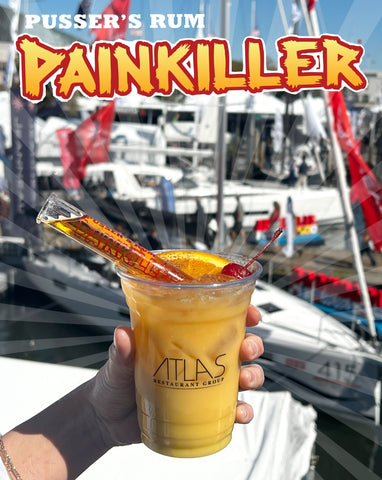The Beginner's Guide to Navy-Strength Rum
Navy Rum has an extensive history. Today, we use navy-strength rum as a way to gauge the rum's alcohol content. Here's what you need to know:
The Grog Cocktail. The Painkiller. These are the forms that navy-strength rum take today. This beloved rum has a long history with the British Royal Navy and we still value it today for its full flavor, dark color, and strength.
But what exactly makes Pusser's navy-strenth rum navy-strength? Read on to learn a little history behind this favorite drink of sailors and bar patrons alike.
What Is Navy Strength Rum?
Navy strength rum got its start after the Royal Navy's successful invasion of Jamaica in 1655. After the invasion, the Royal Navy started giving a daily ration of Jamaican produced rum to its sailors. The ration of rum replaced their daily ration of French brandy, or beer, which would often spoil onboard long ship voyages.
The ration measured about half a pint and was distributed by the ship's purser, or pusser, as they came to be known.
Today, Pusser's Rum carries on the tradition by making rum from the same recipe that was used by ED&F Man, the company that supplied the Royal Navy for hundreds of years.
Why Navy Strength?
Weighing in between 54% and 57% ABV, navy strength rum is sure to raise the hairs on the back of your neck and give you enough courage to front-load a cannon in the heat of battle. Navy rum strength is more than most other rums (like our Blue Label), but not as much as Overproof Rum.
The navy officers would test the strength of the rum by mixing it with gunpowder. If the gunpowder ignited, they knew the rum was "proof." Hence the name of our navy-strength Gunpowder Proof.
The proof of the rum was very important, as the rum casks were often stored in close proximity to the gunpowder. Rough weather at sea could lead to rum-soaked gunpowder which would still ignite if needed.
The Daily Tot
Splice the mainbrace! This was the command for issuing the daily ration, known as a tot of rum, each day at noon. The command comes from the most difficult repair job onboard. He who spliced the mainbrace during battle would receive a double ration, should he survive.
The daily tot of rum was issued in a half-pint, drank neat, and often all at once. The drunkenness and disobedience on board became an issue until a forward-thinking Admiral named Vernon decided it would be best to dilute the rum with water. The half-pint of rum was ordered to be mixed in a scuttlebutt with a quart of water and lime, to prevent scurvy.
The sailors disdainfully named the dink grog, which also became poor old Admiral Vernon's nickname.
Near the end of the 20th century, the daily tasks of a sailor became too complex to mix with alcohol. On July 31st, 1970, the Royal Navy ended its 300-year long tradition as sailors imbibed in their last drink. The day has gone down in history as Black Tot Day and is still celebrated each year.
Thirsty for More?
Grab your scuttlebutt and drink your fill! While its no longer issued to sailors, navy-strength rum is here to stay. Take a look at some of our other posts for more history on Pusser's fine rum.









Leave a comment